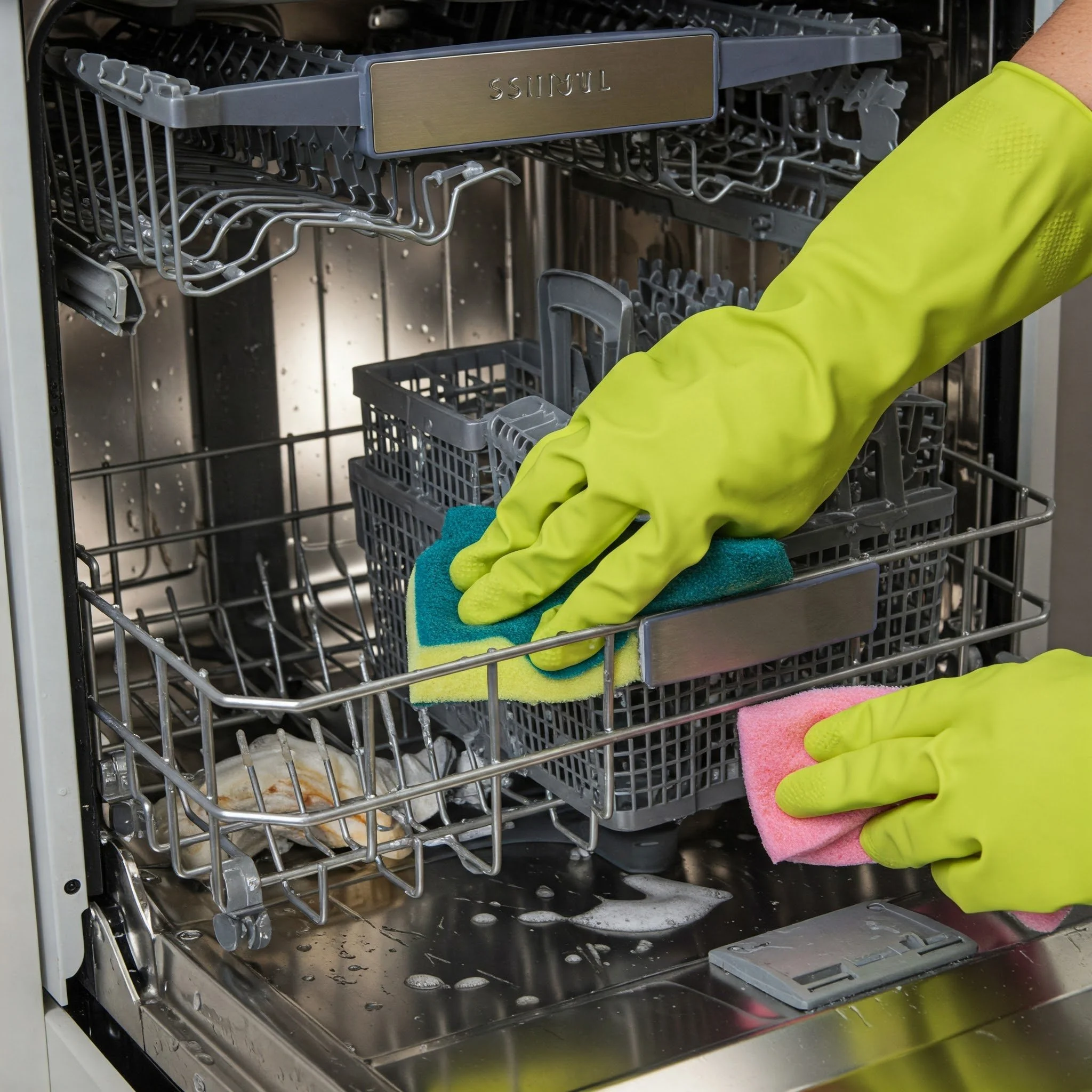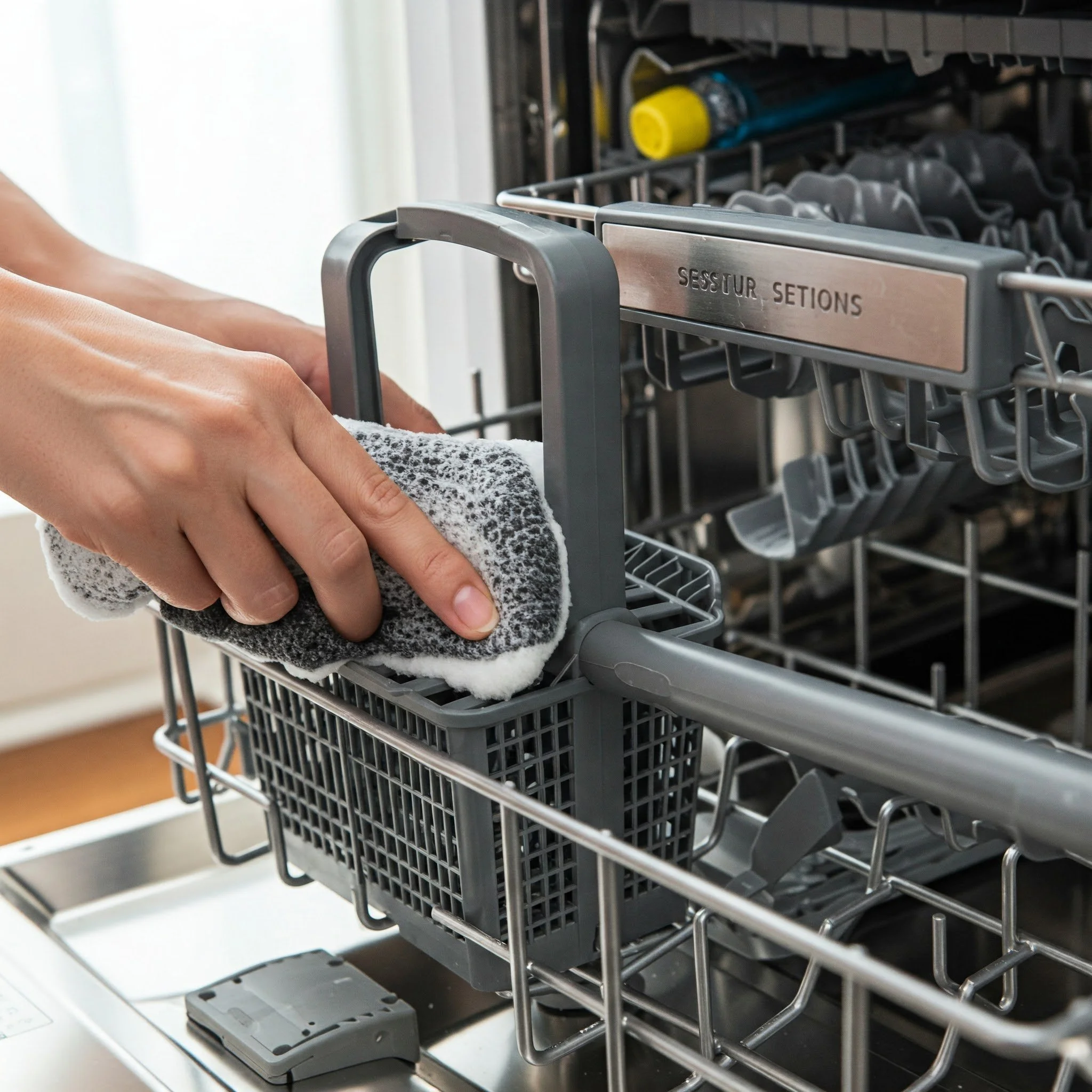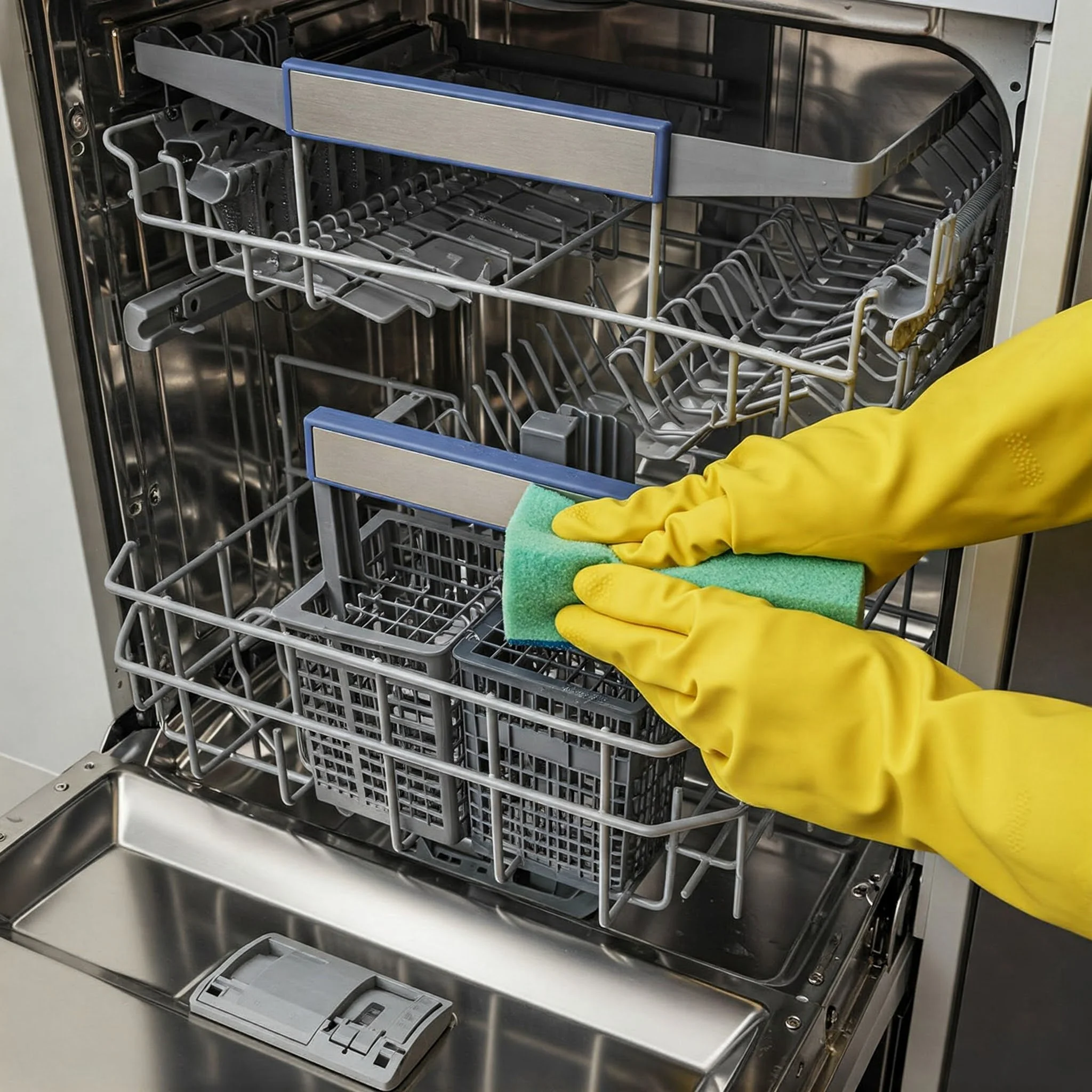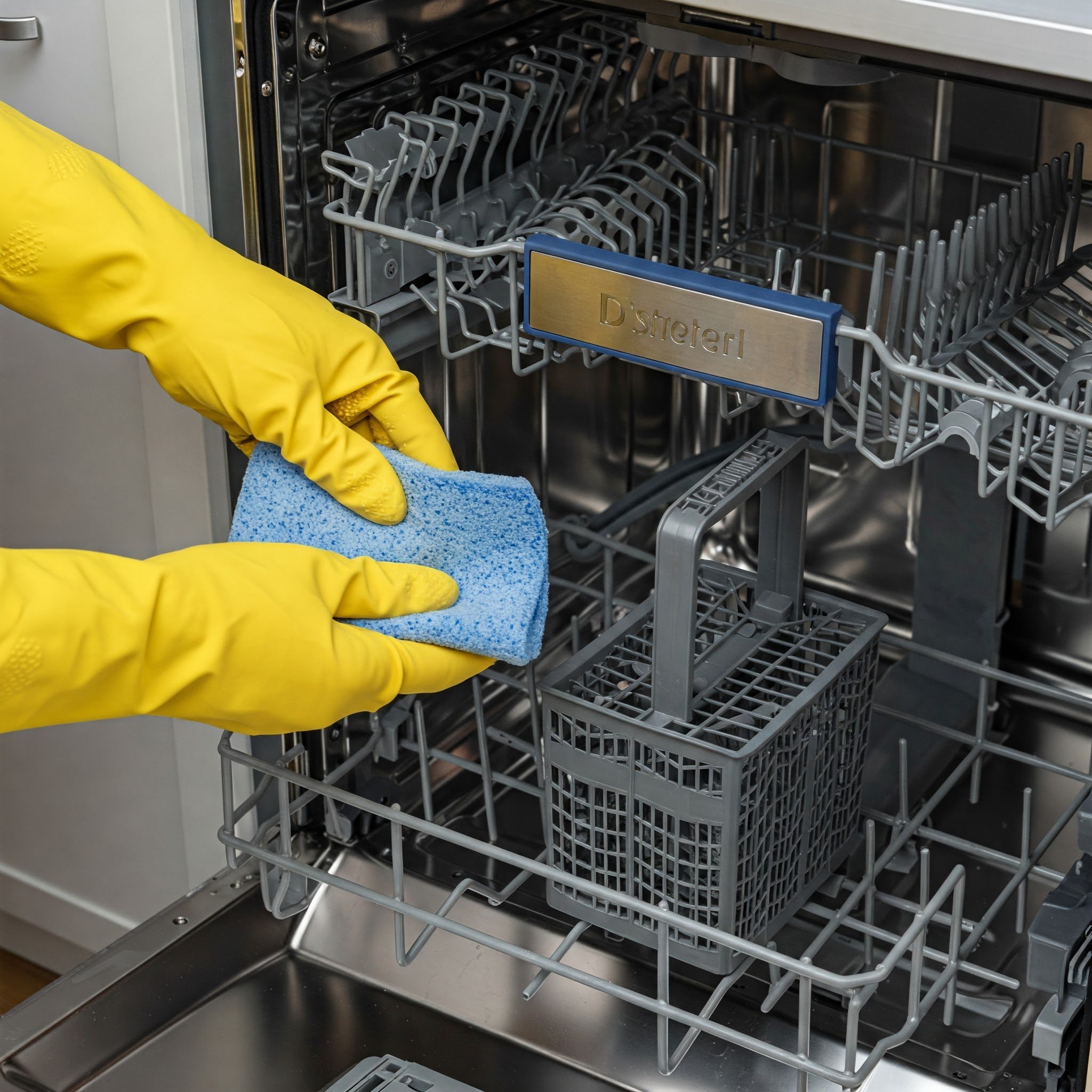How to Clean a Dishwasher for Better Performance
Tired of dishes coming out with gunky residue or less-than-sparkling shine? Discover how to clean a dishwasher for better performance with this detailed, easy-to-follow guide—plus pro tips to keep it humming happily!
Ever pop open your dishwasher, only to be greeted by a stale whiff instead of that squeaky-clean sparkle you were hoping for? You’re not alone! Like any kitchen appliance, dishwashers can turn into grime magnets if left to their own devices. Between the dinner leftovers that slip past the filter, mineral buildup from hard water, and even that lingering soap scum, it’s no wonder some units start foaming at the mouth in protest.
But guess what? Treat your dishwasher with some TLC and it’ll reward you with pristine plates, fresh-smelling cutlery, and fewer “rewash” cycles. And that’s what we’re here to tackle: How to Clean a Dishwasher for Better Performance. We’ll cover everything from quick wipe-downs to deep-cleaning hacks that’ll leave your machine purring like new. If you’re ready to turn your dishwasher from a neglected chore-doer into the star of your kitchen, buckle up—this guide will lay out all the steps you need.
1. Why Cleaning Your Dishwasher Matters
We get it: the dishwasher’s entire purpose is to clean your dishes, so it’s easy to assume it cleans itself in the process. Not so fast! Over time, small but mighty foes—think food particles, mold, mineral deposits—can clog your dishwasher’s nooks and crannies. This can lead to all sorts of headaches, including:
Funky Odors: If you’re greeted by an unpleasant stench every time you crack open the door, it’s time for a scrub.
Cloudy Glasses and Dull Plates: Hard water minerals and leftover detergent can coat your dishes, making them look like they’ve been dusted with chalk.
Longer Cycles or Malfunctions: A dirty filter or sprayer arms can reduce water pressure, forcing the machine to labor harder or simply deliver mediocre cleaning performance.
Bacteria and Mildew: Warm, moist environments are basically heaven for mold and bacterial growth.
Moral of the story? A clean dishwasher is a happy dishwasher. And if you’re out to save money on energy bills, reduce rewash cycles, and keep that baby from breaking down prematurely, you’ll want to take note of How to Clean a Dishwasher for Better Performance at least once a month (or more, if you’re cooking up a storm daily).
2. Dishwasher Anatomy: Know the Key Components
Before rolling up your sleeves and diving in, you’ll want a handle on the main elements of your dishwasher:
Sprayer Arms: These spinning contraptions jet water at your dishes from various angles. Clogs here mean uneven water distribution.
Filter: Often found at the base, the filter snags food debris to prevent it from redepositing or clogging the pump. Some modern dishwashers have removable filters you can rinse—super handy.
Dish Racks: The racks that hold your plates, bowls, and silverware can accumulate stuck-on gunk or rust spots over time.
Door Gasket and Seals: That rubbery lining along the edges can trap debris and form mildew if neglected.
Drain: Typically at the bottom, where leftover water (and the occasional noodle) gets flushed out.
Pro tip? Keep your dishwasher manual handy. Each brand has little quirks—like exactly how to remove the filter or what type of cleaner is recommended. But don’t worry: our general approach works wonders for most models.
3. Tools You’ll Need for a Spotless Dishwasher
Ready to embark on your dishwasher makeover? Let’s gather the essentials.
Warm Soapy Water: Think mild dish soap, not something overly abrasive.
Soft Scrub Brush or Old Toothbrush: Perfect for scrubbing away grime in tight corners.
Non-Abrasive Sponge: Ideal for wiping down surfaces without scratching.
Microfiber Cloth or Soft Rag: Helps pick up lint and leftover residue.
White Vinegar: A miracle worker against grease, soap scum, and odor.
Baking Soda: Great for gentle scrubbing and deodorizing.
Toothpick or Unfolded Paper Clip: Perfect for poking out clogs in sprayer arm holes.
Optional: A store-bought dishwasher cleaner (if you want to skip the DIY route).
Set these up on your countertop or a small bucket near the dishwasher, so you won’t have to rummage around mid-cleaning spree.
4. Pre-Cleaning Prep: Clear Out Your Dishwasher
Step one in How to Clean a Dishwasher for Better Performance is to empty it, obviously. You don’t want to swirl around dirty dishes while you’re scrubbing away the machine’s guts, right?
Unload All Dishes: Take out everything—mugs, plates, silverware—leaving the dishwasher racks themselves empty.
Wipe Away Leftovers: If you notice any lingering chunks of food at the bottom or corners, clear them out now. Sometimes you’ll find a stray lemon seed or a piece of that eggplant you had last week—yikes.
Once it’s completely empty and you’ve done a quick once-over, you’re ready for the main event: deep cleaning.
5. Step-by-Step Deep Cleaning Routine
Time to get into the nitty-gritty of How to Clean a Dishwasher for Better Performance. Follow these steps at least once a month—or more often if your dishwasher is a daily workhorse.
5.1 Remove and Clean the Filter
Locate the Filter: Typically, it’s at the bottom. Check your manual if you’re unsure how to remove it.
Rinse Under Warm Water: Gently scrub the filter with your soft brush or toothbrush. Use mild soap if it’s really grimy.
Inspect for Damage: Filters can wear out over time, so if you see tears or cracks, consider a replacement to maintain optimal performance.
5.2 Inspect and Clear the Sprayer Arms
Detach if Possible: Some arms pop right off for easy cleaning. If not, no worries—you can still clean them in place.
Clear the Holes: Use a toothpick or paper clip to dislodge mineral deposits or food gunk. This step is crucial; clogged sprayers ruin your dishwasher’s water pressure.
Rinse Thoroughly: Give them a quick run under the faucet or wipe with a damp cloth.
5.3 Clean the Interior Walls and Door Gasket
Warm, Soapy Water: Dip your sponge or microfiber cloth into it and gently wipe down the walls, door, and racks.
Pay Special Attention to Gasket: Use your cloth or the toothbrush to scrub around the rubber seal. That’s prime territory for mold and slime to lurk.
Dry with a Clean Cloth: Moisture lingering on the gasket can lead to mildew, so a quick wipe prevents that.
5.4 Deodorize and Dissolve Residue with Vinegar
Fill a Dishwasher-Safe Cup with Vinegar: Place it upright on the top rack (no other dishes or items inside).
Run a Hot Cycle: The steam and hot water mix with the vinegar, cutting through grease and banishing any lingering odors.
No Vinegar? A store-bought dishwasher cleaner or a mild citric acid powder also works wonders, though vinegar is cheap and easily accessible.
5.5 Freshen Up with Baking Soda
Sprinkle a Cup on the Bottom: After the vinegar cycle, pour a cup of baking soda across the dishwasher’s floor.
Short Hot Cycle: A quick wash on the highest temperature helps the baking soda neutralize odors and remove any leftover stains.
Voila! That’s your standard, tried-and-true method for sprucing up a tired dishwasher. If your machine’s severely neglected or your water’s super hard, you might want to repeat the vinegar and baking soda cycles or incorporate a specialized detergent booster occasionally.
6. Optional Add-Ons: Boosting the Clean
Want to go above and beyond with How to Clean a Dishwasher for Better Performance? Here are some optional extras:
6.1 Shine the Exterior
Stainless Steel Cleaning: If your dishwasher front is stainless steel, use a special stainless cleaner or a DIY mix of vinegar and water. Polish in the direction of the grain for a sleek finish.
Buttons and Knobs: Wipe them gently with a damp cloth—no one loves greasy button smudges.
6.2 Deep Clean the Drain
Check for Stuck Debris: Shine a flashlight at the bottom. Fish out anything that shouldn’t be there—a stray twist tie or a chunk of bones.
Pour Boiling Water: Some people swear by a quick flush of hot water (and maybe a dab of baking soda) to keep drains from clogging.
6.3 Remove and Scrub the Racks
Pull Them Out: If they’re significantly dirty or have stuck-on grime, removing them fully might help.
Soak in Soapy Water: A gentle soak in the tub or big basin loosens caked-on food. Then a scrub brush can finish the job.
While these steps aren’t mandatory every single time, they can be life-savers if your dishwasher’s seen better days.
7. Maintenance Tips to Keep Your Dishwasher Happy
No point in doing all this work just to let your dishwasher slide back into filth next week. Here’s how to maintain your glistening champion:
Scrape or Rinse Big Food Bits: We’re not telling you to wash your dishes fully before loading—defeats the purpose, right? Just remove large clumps so they don’t clog the filter.
Use the Right Detergent: High-quality dishwasher detergents are specifically formulated to reduce soap residue. Also, pick a detergent that suits your water type (hard or soft).
Hot Water is Your Friend: Ensure your water heater is set between 120°F and 140°F. Too cold, and the detergent won’t dissolve properly.
Leave the Door Ajar: After a cycle, cracking the door open helps moisture escape, reducing the risk of mildew.
Clean the Filter Weekly: If your filter is removable, giving it a quick rinse each week keeps nasty debris at bay.
Monthly Deep Clean: Commit to that vinegar/baking soda routine or run a store-bought dishwasher cleaner.
Following these tips religiously will keep your dishwasher performing at its peak, saving you from headaches and dingy dishes.
8. Troubleshooting Common Dishwasher Woes
Even if you follow our advice on How to Clean a Dishwasher for Better Performance, you might encounter these classic conundrums:
8.1 Cloudy or Filmy Dishes
Cause: Hard water mineral deposits or too much detergent.
Solution: Use a rinse aid, reduce detergent quantity, or consider installing a water softener if the hardness is extreme.
8.2 Dishes Aren’t Drying Properly
Cause: Maybe your dishwasher’s heating element is malfunctioning, or you’re skipping rinse aid.
Fix: Check if your model has a heated drying option. Make sure the rinse aid dispenser isn’t empty. Also, open the dishwasher door after the cycle to let out steam.
8.3 Strange Noises
Potential Culprit: Silverware might be rattling, or the sprayer arms are hitting plates.
Remedy: Load dishes properly, ensure nothing is obstructing the arms, and confirm that no foreign objects (like bits of glass) lurk in the sump area.
8.4 Error Codes or Lights Flashes
Tip: Always consult your user manual for brand-specific guidance. Often, resetting the machine or checking the filter can solve some minor error codes.
9. When to Call in a Professional
If your dishwasher is still acting up after a thorough deep clean—sprayer arms are squeaky clean, filter’s brand new, the door gasket is impeccable, and you’ve run every cycle known to humankind—then it’s possibly time to ring an expert. Signs you might need professional help:
Leaking: A puddle of water on your kitchen floor after each cycle? Yikes, call a technician for that one.
Electrical Issues: If the dishwasher won’t turn on or shows flickering lights beyond your control, you’re dealing with potential wiring or fuse issues.
Persistent Performance Problems: If it simply won’t clean or drain, no matter how many times you’ve scoured it, there might be a mechanical or pump-related glitch.
10. Environmentally Friendly Approaches
We live in a world that’s more eco-conscious than ever, and taking care of your dishwasher responsibly can lessen your carbon footprint:
Opt for Natural Cleaners: Vinegar, baking soda, and even lemon juice can tackle grime without harsh chemicals.
Energy-Saving Cycles: Many modern dishwashers have “Eco” or “Energy Saver” options. Use them! You’ll lower water and electricity use.
Full Loads Only: Running smaller loads wastes water and energy. Wait until the dishwasher’s about 80-90% full for optimum efficiency.
Doing these small steps not only helps the planet but can also keep your dishwasher healthier in the long run.
Conclusion
A well-maintained dishwasher is like a loyal sidekick in the kitchen—always ready to tackle the toughest grime so you can focus on more enjoyable things (like eating!). But if you skip out on routine upkeep, you’re essentially sabotaging your own convenience. From daily tidying to monthly deep cleans, staying on top of How to Clean a Dishwasher for Better Performance ensures your meals are served on sparkling plates and your glasses are crystal clear (and odor-free) every time.
So, carve out a little time each month to follow this guide. Whether it’s rinsing the filter, scrubbing the sprayer arms, or running a vinegar-and-baking-soda cycle, your dishwasher will thank you—and your family or dinner party guests will never have to cringe at crusty forks again. Plus, you’ll likely get a longer lifespan out of this mechanical marvel, saving some dough in the process. Win-win, right?
Give your dishwasher the mini spa day it deserves, and it’ll keep your kitchen routine humming along happily for years to come. After all, a little bit of elbow grease now can save you a boatload of hassle (and a dash of shame) later. Let the dishwashing sparkle commence!
Frequently Asked Questions
Q1. How often should I clean my dishwasher?
It depends on usage. A monthly deep clean is a safe bet for the average household. If you have a big family or run the dishwasher daily, aim for every two weeks. Simple weekly filter checks help keep things fresh in between.
Q2. Will vinegar harm my dishwasher?
Generally, no. Vinegar is an excellent, natural cleaner for most dishwashers. However, avoid using it in conjunction with bleach-based cleaners or other strong chemicals—some combos can create harmful fumes or degrade certain parts.
Q3. My dishwasher smells musty, even after cleaning. Why?
It could be leftover trapped water or a clogged drain. Check the drain path for obstructions. Also, ensure you’re letting the machine dry out by keeping the door slightly open after a cycle. If the smell persists, try repeating the vinegar cycle or consider a specialized dishwasher deodorizer.
Q4. Can I use bleach to clean my dishwasher?
Bleach can kill mold and bacteria but isn’t always necessary or recommended. If your dishwasher’s stainless steel or has rubber components, bleach might damage it. When in doubt, consult your manual or stick to vinegar and a store-bought dishwasher cleaner.
Q5. Do I really need to remove the filter and sprayer arms?
If they’re designed to be removed, yes—once in a while, it’s wise to do so. You can thoroughly clear out debris you wouldn’t otherwise reach. But if your dishwasher has fixed components, a toothbrush and hot water flush might suffice.

































